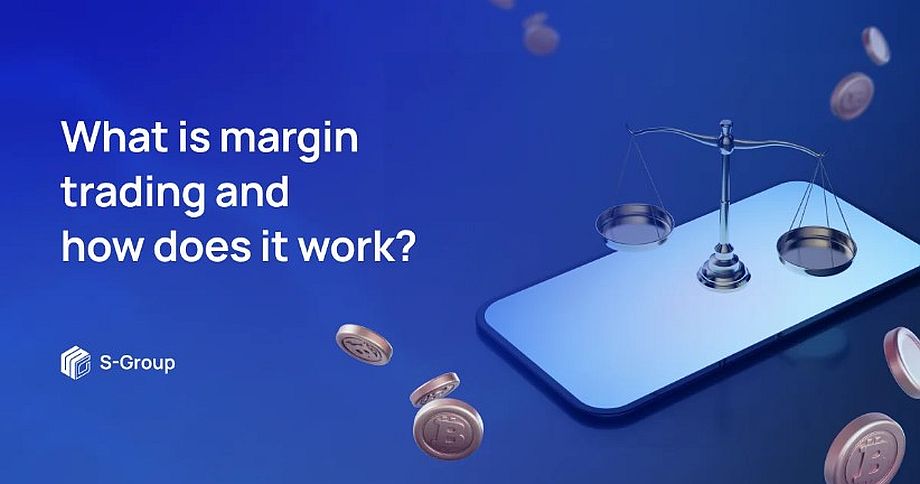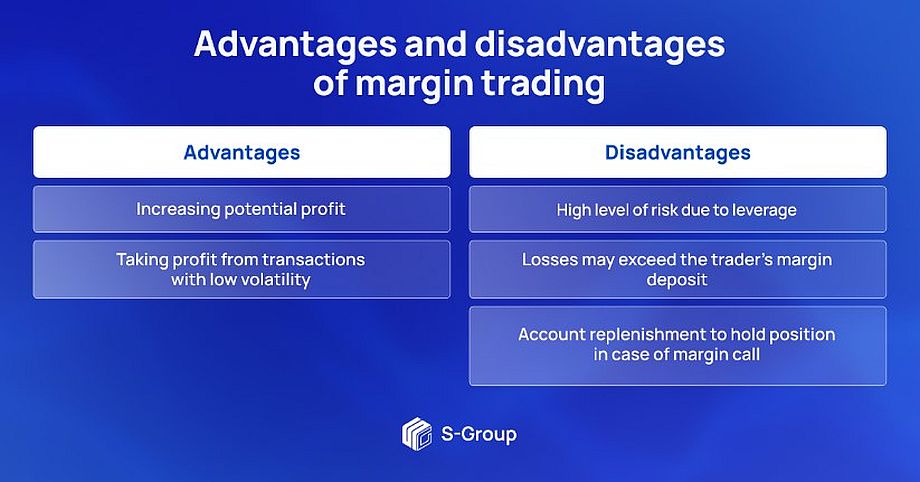Margin trading crypto: definition and benefits
Margin trading has become a popular method to trade in the crypto market, allowing traders to use leverage and increase their potential income. However, it is also a high-risk way of investing that requires good preparation and an understanding of the fundamentals.
In this article, we tell you what is margin trading in the crypto market, how it works, what are the advantages and risks of this method, and how traders can use margin trading to profit.
What is margin trading and how does it work
Margin trading in the crypto market allows traders to trade cryptocurrencies using borrowed funds that are provided by the exchange. The trader must provide a certain percentage of the value of the position as collateral, which is called margin.
For example, if a trader wants to open a $1,000 position and the margin requirement on the exchange is 10%, the trader must provide a $100 deposit. This deposit protects the exchange from potential losses that may arise from price fluctuations in the market.
If the price of the cryptocurrency goes in the trader’s favor, he can close his position and make a profit. However, if the price moves in the opposite direction and the value of the position decreases to the margin level, the trader will receive a margin call from the exchange, which means that he must fund his account to keep his position in the market. If a trader fails to deposit funds in his account, the position will be automatically closed to prevent additional losses.
Long or short position in margin trading
Margin on a cryptocurrency exchange can be long or short. These are Margin Trading Short and Margin Trading Long. When opening a cryptocurrency position, the trader is given a choice between long or short.
A long position is preferred by traders who believe that the cryptocurrency price will rise over time.
A short position works the opposite way: the trader who chooses to go short expects a decrease in the price of the cryptocurrency.
The choice of a long or short strategy is based on a prediction as well as a personal view of the cryptocurrency’s trend. Depending on whether it tends to increase or decrease in value over time, different steps need to be taken.
These two strategies have the lowest common denominator: the fact that, in both cases, the exchange platform always keeps margin as collateral and returns the profit made. In the event of a loss that exceeds the margin guarantee, it will be retained by the broker, who can use the automatic position liquidation option. In this case it is said that the liquidation price has been reached.
Advantages and disadvantages of margin trading
One of the main advantages of margin trading in the crypto market is the opportunity to increase trader’s profitability.
Margin trading allows a trader to increase his position in the market without investing the full value of the position, thus increasing his potential profit.
In addition, margin trading can help traders profit from short trades and markets with low volatility.
However, margin trading also presents a high level of risk. If a trader misjudges the market, they can incur significant losses that could exceed their margin deposit. In addition, if the market moves in the opposite direction, a trader may receive a margin call from the exchange and lose his position in the market.
Therefore, traders who want to use margin trading in the crypto market should have a good understanding of the risks and use margin trading with caution. They should also have a well-developed risk management strategy and monitor market news and events that could affect cryptocurrency prices.
To summarize Margin trading
Margin trading in the crypto market is one of the most popular and high-risk ways to trade cryptocurrencies.
One of the main advantages of margin trading in the crypto market is the opportunity to increase a trader’s profitability. However, margin trading also presents a high level of risk, as it increases both potential profits and potential losses.
To use margin trading in the crypto market for profit, traders must have a good understanding of technical and fundamental analysis, a well-developed risk management strategy, and follow market news and events. They can also use different indicators and signals to identify entry and exit points in the market.
If used with care and a well-developed risk management strategy, margin trading can be a powerful tool for increasing a trader’s profitability.


